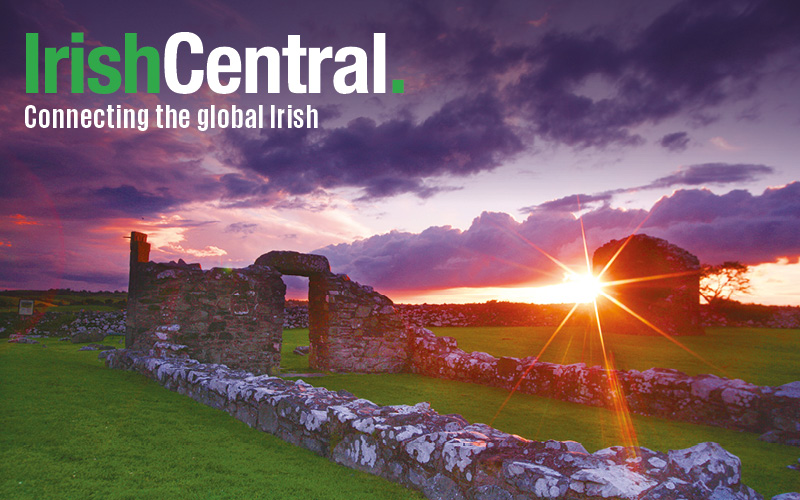Her name is Jalia Carlton-Carew. She is a junior at Arabia Mountain High School (an Environmental Science Magnet school) in Lithonia, GA. She is also, the child of two immigrant parents from Freetown, Sierra Leone.
On March 13 Jalia’s essay was read before a packed audience including Taoiseach Enda Kenny and Irish Ambassador to the United States Anne Anderson who were guests of honor at this year's St. Patrick’s Day festivities in Atlanta. David Perdue, the newly elected Republican Senator from Georgia, was also in attendance.
The American Dream holds out a promise for citizens of the United States that if they work hard enough they can enjoy lives full of opportunity, prosperity and happiness. As the child of immigrant parents from Sierra Leone, I have experienced many of the benefits of this land of freedom and opportunity. But I know from personal experience that life is not always easy for immigrants.
As I have learned, life was also not easy for the hundreds of thousands of Irish immigrants who came to the United States in the middle of the nineteenth century to escape the horrors of famine and poverty as well as the religious persecution and political conflicts that had plagued them for centuries. On their way across the ocean in disease-ridden boats, they were packed on top of one another like animals. So many died on the journey that the boats became known as “coffin ships”.
Nor did their troubles cease when they finally arrived in America. The majority of the Irish immigrants were uneducated and did not speak English. To those who had preceded them as colonists but were now well established in the New World, the Irish were perceived as filthy, illiterate creatures of no account.In order to survive, the Irish were forced to take jobs that were too dangerous even for African-American slaves. Slaves were worth something after all; Irish laborers were worth nothing. Indeed, the overcrowded ghettos in which they lived were often worse than slave quarters. The obvious difference in their condition is that the African-American slaves had as yet no possibility of escaping the bonds of their cruel situation.
Today St. Patrick’s Day is the only ethnic celebration that has become a national holiday. Originally the holiday was celebrated by Irish immigrants in honor of their patron Saint.But St.Patrick’s Day was also a highly public way of demonstrating to the bigoted Nativist Americans who scorned them that they were a people of honor and dignity with a proud culture going back thousands of years. The Irish carried with them a source of inner strength in the Christian faith that was given to them by St.Patrick. It is important to remember, however, that St. Patrick himself was enslaved as a young man and brought to Ireland where he was held in captivity for six years until he finally escaped. Patrick returned to Ireland as a missionary. The eminent bishop, who converted the Irish to Christianity, was also one of the first world figures to speak out forcefully against the horrible institution of slavery.
Fifteen hundred years later, in June 1962, John Fitzgerald Kennedy, the first Irish Catholic President of the United States, called upon his fellow Americans to recognize that the work of the Civil War was not complete: “We are confronted primarily with a moral issue. It is as old as the scriptures and as clear as the American Constitution. The heart of the question is whether all Americans are to be afforded equal rights and equal opportunities… this Nation, for all of its hopes and all of its boasts will not be fully free until all of its citizens are free…” A week later President Kennedy asked Congress for the enactment of the most far- reaching civil rights bill in the country’s history. Reflecting the same moral values as his brother, Senator Edward Kennedy’s crucial endorsement of the candidacy of Barack Obama enabled him to become the first African-American President of the United States.
St. Patrick’s Day clearly carries an incredible history and significance. But much of that history and significance has been lost, meaning that today many people celebrate the holiday as simply a good opportunity for a party involving strange little purple-haired leprechauns, a pinch on the arm for not wearing green and a chance for a lot of public drinking. That’s all I learned about “St. Paddies Day” growing up as an American school-kid. It would have meant a lot to me, particularly as an immigrant child, had I known the true meaning of St. Patrick’s Day. The holiday is important not only to people like me but to all those Americans who reap the benefits of what the Irish worked so hard to achieve and have passed down as a lasting legacy.
In my own case, even though I knew that I was “black” I was aware that I was not a “black American”. My black classmates would not have understood the language that was spoken to me at home or have known of the foods that my mom prepared for me. In time, I became aware that I am a Sierra-Leonean American, whose ancestors come from the Krio tribe. To this day, there is still a lot of rivalry within the ancient tribal structure of African society. (I am told that in Ireland similar rivalries exist, especially in the tribal warfare between Gaelic football teams in County Kerry and places like County Mayo with Mayo inevitably losing.)
As occurred in Ireland, my ancestors in Sierra Leone also suffered a great deal from the effectsof colonizationand resultant warfare.I have become aware that next year is the hundredth anniversary of the war that ultimately brought independence to Ireland. Sadly that struggle developed into a civil war concerned with different ideas about the ultimate destiny of Ireland. The same thing occurred in the Blood Diamond War that broke out in Sierra Leone during the 1990s and affected a large number of families, including my own. Tribes fought against other tribes and the results were catastrophic. It is important for young people to learn of these tragic events so that, with the help of what America has taught us about getting along with one another,we can help to heal the bitter divisions within our ancestral homelands. In that regard, it is worth noting that the Troubles in Northern Ireland were brought to an end because of the peace keeping role played by Irish-Americans. It is my personal dream to play a similar role in Sierra Leone.
The Irish who immigrated to the United States in the nineteenth century believed in their own potential and were eventually able to achieve their own version of the American Dream. It is appropriate that Irish-Americans should continue to honor St.Patrick and the achievements of their ancestors who, against incredible obstacles,became the first immigrant people to achieve the American Dream. St. Patrick’s Day also celebrates the ongoing hopes of all immigrants who continue to come to America in order to achieve their dreams. That is the real reason why St.Patrick’s Day is a national holiday that belongs to all of us, regardless of our race and religion. On March 17th Americans proudly wear the springtime green of Ireland as a symbol of possibility and renewal.
Go raibh maith ataibh agus La` le Padraig fasi mhaise dhaoibh. Thank you and Happy St. Patrick’s Day!
Jalia Carlton- Carew
Arabia Mountain High School in Lithonia, GA
March 2015




Comments